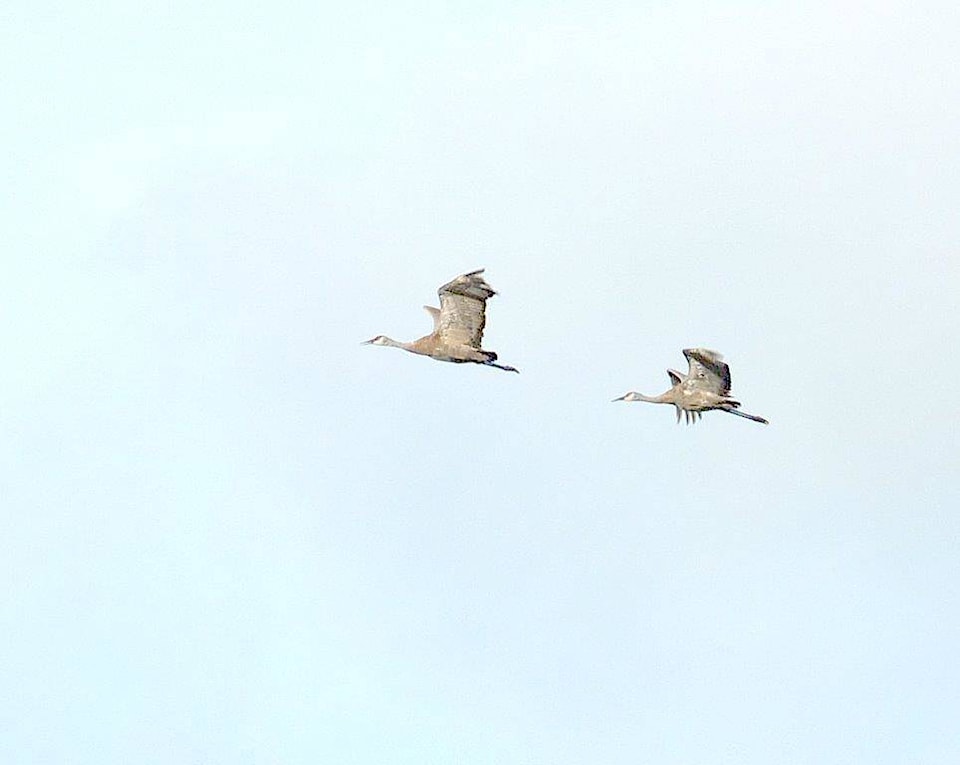By Margo Hearne
The eclipse was wonderful. A foggy mist passed before the sun just in time to allow for a few photographs before the camera sensor would have burned out. All was well. During some of the rare eclipses of my youth, the local hens would go back to roost and the rooster would call. In Delkatla the flock of Sandhill Cranes, which had been feeding quietly in the grass, raised their heads in alarm, called loudly, and some flew back to MacIntosh Meadows. Others didn’t and kept on grazing calmly in the gathering gloom. Who decided whether to stay or go? I suspect the younger members of the flock were more anxious than the older ones, but they all returned when the sun came back out and things returned to normal.
The small Lincoln Sparrow families also got quite agitated when the sky darkened. They flew around anxiously, heading for an unexpected roost. But it was a short night for everyone — the sun was back out in full force within a half-hour and they all settled down again. Overall, the golden eclipse light that coloured Delkatla was something special and it was a treat to share, in a small way, the continental excitement over the event. Even though we didn’t get to see “totality” or “Bailey’s beads” — those sparks of light where the moon’s jagged surface allows sunlight to show through — we were part of it all and so were the birds.
The rain came down next day, and with it came a mixed flock of ducks that landed by the water’s edge. They were heading south and didn’t stay long but it’s the first time this summer that ducks have reappeared after the nesting season. It was a mixed flock, mostly Green-winged Teal and Pintail, but also a few American Wigeon and Northern Shoveler. Shorebirds flitted around at their feet and, true to form, a large accipiter flew over, possibly a Cooper’s Hawk, and scared everything up. Cooper’s are rare here but it seemed bigger that its close cousin, the Sharp-shinned Hawk, and was smaller than a Goshawk, the other island accipiter (In Latin, accipere means “to grasp.”)
The crane family of four is still around. The “colts” are getting bigger and can now fly. They will leave by mid-September. They are prehistoric looking, dramatic birds and add immeasurably to the grandeur of the islands. Many of the visitors to the Nature Centre were keenly interested in seeing cranes, and more often than not, the birds obliged. Just yesterday the family fed right outside the centre’s front window as though it wasn’t there.
Things are happening in Delkatla Wildlife Sanctuary. When the Stepping Stones Trail (Dike Road) was built up using material dredged from the marina a few years ago, it blocked tidal access to the upper half of the sanctuary. Ducks Unlimited, who are doing the work, explain that “portions of the upper marsh have become hydrologically isolated due to collapsed and undersized/aged culverts in an access road which bisects the slough, and the upper portion has become less brackish (and less functional) as a result.” The job is expected to take three days and should be done by the time you read this. It will allow for more fish passage and better drainage.
